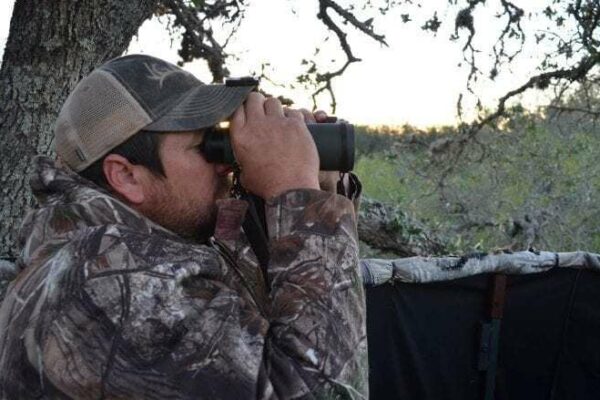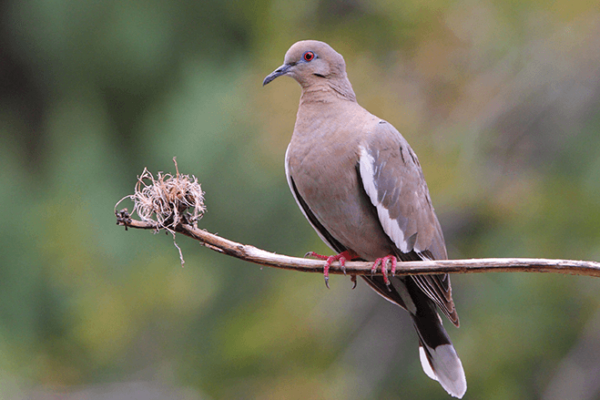By Ralph Winingham
A lot of sweat equity and time spent in the field, plus some old-fashioned guesswork, during the spring and summer is a necessity for Texas dove hunters hoping to experience a bird bonanza on Sept. 1. That work and time by outfitters, guides, landowners and Texas Parks and Wildlife Department biologists often goes unseen and unheralded by the hundreds of thousands of hunters who test their shooting skills against both white-winged and mourning doves across the Lone Star state. Some years, scouting reports and bird-count surveys are quite accurate in pinpointing dove numbers and migratory patterns. In other years, unexpected weather conditions or other factors blast those predictions right out of bird-less skies.
Among the most concentrated efforts to get a handle on bird numbers and potential wingshooting hot spots is conducted each spring and summer by TPWD biologists and observers. The annual bird count surveys are a major factor in predictions of bird populations across the Lone Star state and along the migratory flyways of both mourning and white-winged doves.
“We conduct two surveys each May and June,” said Owen Fitzsimmons, TPWD’s webless migratory bird program leader. “One is a rural call count and survey that deals mainly with mourning doves and the second is an urban count, which is a little tougher to conduct, that covers mostly white-winged doves,’’ he said. “We’ve been doing this for about 11 to 12 years so we are able to base our predictions on historical data,’’ he added.
The observers travel county roads and visit randomly selected urban areas to listen for dove mating calls—the coos that sound like “Who coos for you?”—which can start as early as Valentine’s Day. In addition, the observers use binoculars and range finders to record any birds in flight around the observation points. That information is compiled, along with reports from guides, outfitters and landowners, to be used for the annual dove forecasts released in August by TPWD officials.
“We get with our field staff and outfitters, gathering information from as many people as we can, to try to paint a picture of the dove situation,’’ Fitzsimmons said. However, he is quick to point out that attempting to predict when and where the birds might fly at any given time is much an inexact science as it is an art. “It is not unusual for birds to be thick in one area one day and gone the next,’’ he said. “We believe we are as accurate as we can be, but it is always a challenge.”
Fitzsimmons said that with an estimated dove population numbering in the hundreds of millions across the nation and tens of millions in Texas, predicting whether or not birds will be flying in a specific part of the state at a specific time is a nearly impossible task. Texas is considered the prime dove hunting location in the United States, with about 250,000 to 300,000 Texas hunters bagging more than 6 million mourning and white-winged doves each year. That tally makes up about 20-25 percent of the annual dove busting across the country and pumps about $500 million into area communities each season.
In addition to providing observations to TPWD, outfitters and guides across the state are scouting and in their pre-season preparation mode throughout the spring and summer; engaging in planting and monitoring food plots while attempting to determine any change in flyway patterns. Mark Katzfey of Katzfey Ranch near George West, said he works nearly year-round to keep tabs on the migratory birds that rarely fail to provide his hunters with some prime time wingshooting action. During the past two decades that he has been operating hunting leases across Live Oak and Frio counties, he has learned that the birds are seldom predictable.
“Dove hunting is my business, it is not just a hobby. My food plots are treated like real farming,” Katzfey said. “You can’t just try to grow a seed crop at the last minute and expect something good to happen.”
Using irrigated fields as much as possible, he said plans his planting in the spring and summer so that crops such as sesame, which takes 120 days to mature, and sunflowers that mature in 90 days will be ready for the birds about a week or so before the season opener on Sept. 1. “Irrigation makes life a lot easier—you are not living or dying on the chance of catching rain at the right time,” he said. Dry-land farming of native grasses such as sunflowers and crouton is a little more risky, but can also produce some bird-shooting havens if proper planning and preparation are thrown into the mix.
In addition to the spring-time decisions about when, where and what crops to plant as potential bird magnets, he also spends a lot of road time observing any birds that winter in the area or pass through certain fields. “It is nice to see the birds in an area during the spring and summer—it is better than not seeing them—but that is not an indication the doves will be there on Sept. 1.
“Last July the birds were just thick in one of the sunflower plots because of the rain in March, April and May. Then it quit raining and the sunflowers quit producing seeds. Come Sept. 1, the birds were just gone,” he said. Fortunately Katzfey manages multiple sites so he can shift hunters from non-productive areas to wingshooting hot spots when it becomes necessary.
“Last year was one of the best years we have ever had,” he said. “Even in the winter season we were seeing good numbers of both mourning doves and some white-wings and it was all over food plots. Not a single hunt was a pond (water) hunt,” Katzfey said.
While the veteran outfitter experienced some top-notch hunting during the 2018-2019 seasons, many areas of the state saw some unusually slow action where birds have been plentiful in the past. Concerning the possibility that the doves may be changing their flight or roosting patterns, Fitzsimmons said such a change would be hard to substantiate with the data collected so far. “I know we are receiving calls from hunters who have been hunting the same fields for 20 years and they are just not seeing the birds,’’ he said. “Here in Texas we have experienced rapid changes in both our agricultural and urban areas. “The birds could be reacting to that change in their environment,’’ he added.
In the past two years, weather conditions have not been conducive to holding doves in what would be considered their typical feeding and flyway areas. In addition, hunters in some areas of the state, particularly those in Bexar and surrounding counties, have noted a change in the forage habits of the birds. Hunters examining the crops of bagged white-winged doves normally filled with corn kernels or sunflower seeds from area fields have instead found items such as small green olives and blue or green berries about the size of small grapes. The switch in forage has apparently been caused by a reduction in the availability of planted food plots and crops as a result of a change in agricultural practices or unfavorable weather conditions.
“White-winged doves, unlike mourning doves that generally feed on the ground, will sit in trees and feed at tree level. It is not unusual for them to feed on fruits or berries if that is what is available,’’ Fitzsimmons said.




